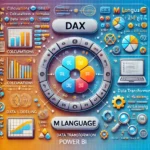In the world of web automation, Python has established itself as one of the most popular and versatile programming languages. When it comes to automating web browsers, two prominent options stand out: Selenium with Python bindings and Python itself. Both tools have their strengths and use cases, and choosing the right one depends on your specific needs and preferences.
Selenium Python: The Power of Automation
Selenium Overview: Selenium is an open-source web testing framework that allows developers to automate web browsers for testing and web scraping purposes. It supports multiple programming languages, including Python, Java, C#, and others. Selenium’s ability to interact with web elements and simulate user actions makes it an excellent choice for end-to-end testing of web applications and data extraction from websites.
Why Choose Selenium Python?
a. Rich Web Interaction: Selenium excels at handling dynamic web pages that heavily rely on JavaScript and AJAX. It can interact with complex elements like dropdowns, pop-ups, and iframes, making it well-suited for testing and automating modern web applications.
b. Cross-Browser Support: One of Selenium’s key advantages is its ability to work across various web browsers, such as Chrome, Firefox, Edge, Safari, and more. This feature ensures your web automation scripts remain consistent and functional, irrespective of the browser used.
c. Broad Community and Ecosystem: Selenium has a massive and active community, contributing to extensive documentation, tutorials, and plugins. You can find numerous resources and support online to help you get started and overcome any challenges you may encounter during the automation process.
https://synapsefabric.com/2023/07/28/latest-updates-on-python-selenium-chrome-options-arguments/
Python: The Swiss Army Knife of Programming
Python Overview: Python is a high-level, general-purpose programming language known for its simplicity, readability, and vast standard library. It has a wide range of applications, including web development, data analysis, machine learning, scripting, and, of course, automation. Python’s user-friendly syntax and extensive libraries make it a preferred language for various automation tasks.
Why Choose Python for Web Automation?
a. Simplicity and Versatility: Python’s syntax is straightforward and easy to learn, even for those new to programming. It offers an extensive standard library with modules like ‘requests’ and ‘beautifulsoup,’ which can handle web requests and parse HTML data efficiently, making it ideal for web scraping.
b. Lightweight and Quick Prototyping: For simple web automation tasks and rapid prototyping, Python alone can be an excellent choice. It doesn’t require additional setups like Selenium does and can be a quicker solution when time is of the essence.
c. Integration with Other Tools: Since Python is a general-purpose language, it integrates seamlessly with other technologies and frameworks. If your automation needs go beyond web-related tasks, Python can be extended to cater to various requirements.
https://synapsefabric.com/2023/07/27/automation-anywhere-vs-selenium-a-comprehensive-comparison-of-automation-tools/
Making the Choice: Selenium Python Vs. Python
Use Selenium Python If:
- You need to test complex web applications with dynamic elements and JavaScript-heavy interactions.
- Cross-browser testing is essential for your automation project.
- You require a robust ecosystem with extensive community support.
Use Python If:
- Your web automation needs are relatively simple, like web scraping or simple form submissions.
- You want a lightweight and quick solution for small-scale automation tasks.
- You plan to integrate your automation process with other non-web related tasks.
In the battle of Selenium Python Vs. Python for web automation, there is no clear winner. It ultimately depends on the specific requirements of your project and your familiarity with the technologies. If you are focused on testing web applications with dynamic elements and require cross-browser support, Selenium with Python bindings is a powerful and reliable choice. On the other hand, for simple web scraping tasks and quick prototyping, Python alone can be a lightweight and efficient solution.
The best approach might be to learn both Selenium with Python and Python itself. Having a versatile skill set will enable you to tackle a wide range of web automation challenges effectively and efficiently. Whether you choose the power of Selenium or the simplicity of Python, automation will undoubtedly boost your productivity and simplify repetitive web tasks. Happy automating!






